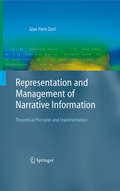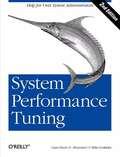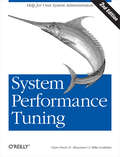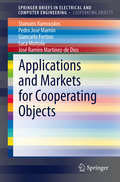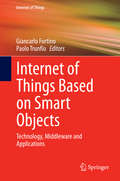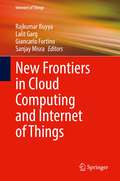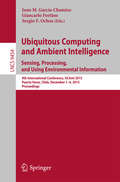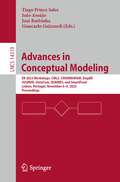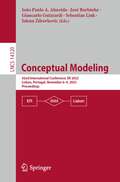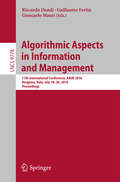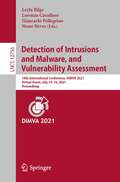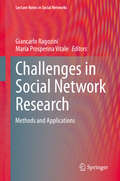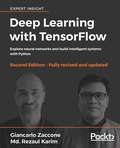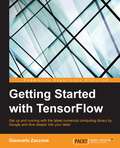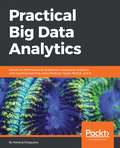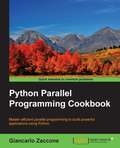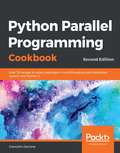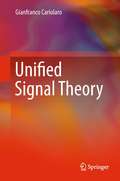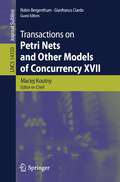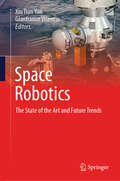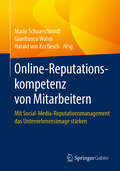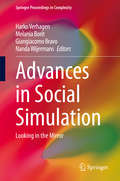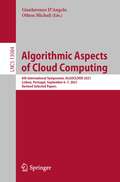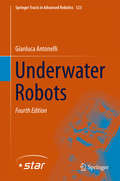- Table View
- List View
Representation and Management of Narrative Information
by Gian Piero ZarriA big amount of important, 'economically relevant' information, is buried within the huge mass of multimedia documents that correspond to some form of 'narrative' description. Due to the ubiquity of these 'narrative' resources, being able to represent in a general, accurate, and effective way their semantic content - i.e., their key 'meaning' - is then both conceptually relevant and economically important. In this book, we present the main properties of NKRL ('Narrative Knowledge Representation Language'), a language expressly designed for representing, in a standardised way, the 'meaning' of complex multimedia narrative documents. NKRL is a fully implemented language/environment. The software exists in two versions, an ORACLE-supported version and a file-oriented one. Written from a multidisciplinary perspective, this exhaustive description of NKRL and of the associated knowledge representation principles will be an invaluable source of reference for practitioners, researchers, and graduates.
System Performance Tuning, 2nd Edition
by Mike Loukides Gian-Paolo D. MusumeciSystem Performance Tuning answers one of the most fundamental questions you can ask about your computer: How can I get it to do more work without buying more hardware? In the current economic downturn, performance tuning takes on a new importance. It allows system administrators to make the best use of existing systems and minimize the purchase of new equipment. Well-tuned systems save money and time that would otherwise be wasted dealing with slowdowns and errors. Performance tuning always involves compromises; unless system administrators know what the compromises are, they can't make intelligent decisions. Tuning is an essential skill for system administrators who face the problem of adapting the speed of a computer system to the speed requirements imposed by the real world. It requires a detailed understanding of the inner workings of the computer and its architecture. System Performance Tuning covers two distinct areas: performance tuning, or the art of increasing performance for a specific application, and capacity planning, or deciding what hardware best fulfills a given role. Underpinning both subjects is the science of computer architecture. This book focuses on the operating system, the underlying hardware, and their interactions. Topics covered include: Real and perceived performance problems, introducing capacity planning and performance monitoring (highlighting their strengths and weaknesses). An integrated description of all the major tools at a system administrator's disposal for tracking down system performance problems. Background on modern memory handling techniques, including the memory-caching filesystem implementations in Solaris and AIX. Updated sections on memory conservation and computing memory requirements. In depth discussion of disk interfaces, bandwidth capacity considerations, and RAID systems. Comprehensive discussion of NFS and greatly expanded discussion of networking. Workload management and code tuning. Special topics such as tuning Web servers for various types of content delivery and developments in cross-machine parallel computing For system administrators who want a hands-on introduction to system performance, this is the book to recommend.
System Performance Tuning: Help for Unix Administrators
by Mike Loukides Gian-Paolo D. MusumeciSystem Performance Tuning answers one of the most fundamental questions you can ask about your computer: How can I get it to do more work without buying more hardware? In the current economic downturn, performance tuning takes on a new importance. It allows system administrators to make the best use of existing systems and minimize the purchase of new equipment. Well-tuned systems save money and time that would otherwise be wasted dealing with slowdowns and errors. Performance tuning always involves compromises; unless system administrators know what the compromises are, they can't make intelligent decisions.Tuning is an essential skill for system administrators who face the problem of adapting the speed of a computer system to the speed requirements imposed by the real world. It requires a detailed understanding of the inner workings of the computer and its architecture. System Performance Tuning covers two distinct areas: performance tuning, or the art of increasing performance for a specific application, and capacity planning, or deciding what hardware best fulfills a given role. Underpinning both subjects is the science of computer architecture. This book focuses on the operating system, the underlying hardware, and their interactions. Topics covered include:Real and perceived performance problems, introducing capacity planning and performance monitoring (highlighting their strengths and weaknesses). An integrated description of all the major tools at a system administrator's disposal for tracking down system performance problems. Background on modern memory handling techniques, including the memory-caching filesystem implementations in Solaris and AIX. Updated sections on memory conservation and computing memory requirements. In depth discussion of disk interfaces, bandwidth capacity considerations, and RAID systems. Comprehensive discussion of NFS and greatly expanded discussion of networking. Workload management and code tuning. Special topics such as tuning Web servers for various types of content delivery and developments in cross-machine parallel computing For system administrators who want a hands-on introduction to system performance, this is the book to recommend.
Applications and Markets for Cooperating Objects (SpringerBriefs in Electrical and Computer Engineering)
by Stamatis Karnouskos Pedro José Marrón Luca Mottola Giancarlo Fortino José Ramiro Martínez-de DiosThis book provides an overview and an insight in cooperative objects and defines the classification of topics into the different areas. A significant number of researchers and industrial partners were contacted in order to prepare the roadmap. The book presents of the main results provided by the corresponding European project "CONET".
Internet of Things Based on Smart Objects
by Giancarlo Fortino Paolo TrunfioThe Internet of Things (IoT) usually refers to a world-wide network of interconnected heterogeneous objects (sensors, actuators, smart devices, smart objects, RFID, embedded computers, etc) uniquely addressable, based on standard communication protocols. Beyond such a definition, it is emerging a new definition of IoT seen as a loosely coupled, decentralized system of cooperating smart objects (SOs). A SO is an autonomous, physical digital object augmented with sensing/actuating, processing, storing, and networking capabilities. SOs are able to sense/actuate, store, and interpret information created within themselves and around the neighbouring external world where they are situated, act on their own, cooperate with each other, and exchange information with other kinds of electronic devices and human users. However, such SO-oriented IoT raises many in-the-small and in-the-large issues involving SO programming, IoT system architecture/middleware and methods/methodologies for the development of SO-based applications. This Book will specifically focus on exploring recent advances in architectures, algorithms, and applications for an Internet of Things based on Smart Objects. Topics appropriate for this Book include, but are not necessarily limited to: - Methods for SO development - IoT Networking - Middleware for SOs - Data Management for SOs - Service-oriented SOs - Agent-oriented SOs - Applications of SOs in Smart Environments: Smart Cities, Smart Health, Smart Buildings, etc. Advanced IoT Projects.
New Frontiers in Cloud Computing and Internet of Things (Internet of Things)
by Rajkumar Buyya Giancarlo Fortino Sanjay Misra Lalit GargThis book provides an account of the latest developments in IoT and cloud computing, and their practical applications in various industrial, scientific, business, education, and government domains. The book covers the advanced research and state of the art review of the latest developments in IoT and cloud computing and how they might be employed post-COVID era. The book also identifies challenges and their solutions in this era, shaping the direction for future research and offering emerging topics to investigate further. The book serves as a reference for a broader audience such as researchers, application designers, solution architects, teachers, graduate students, enthusiasts, practitioners, IT managers, decision-makers and policymakers. The book editors are pioneers in the fields of IoT and Cloud computing.Provides an account of the latest developments in IoT and cloud computing and how it can aid in a COVID-19 Era in a variety of applications; Identifies IoT and cloud computing challenges and their solutions, shaping the direction for future research; Serves as a reference for researchers, application designers, solution architects, teachers, and graduate students.
Ubiquitous Computing and Ambient Intelligence. Sensing, Processing, and Using Environmental Information
by Giancarlo Fortino Juan M. García-Chamizo Sergio F. OchoaThis book constitutes the refereed proceedings of the 9th International Conference on Ubiquitous Computing and Ambient Intelligence, UCAmI 2015, held in Puerto Varas, Chile, in December 2015. The 36 full papers presented together with 11 short papers were carefully reviewed and selected from 62 submissions. The papers are grouped in topical sections on adding intelligence for environment adaption; ambient intelligence for transport; human interaction and ambient intelligence; and ambient intelligence for urban areas.
Advances in Conceptual Modeling: ER 2023 Workshops, CMLS, CMOMM4FAIR, EmpER, JUSMOD, OntoCom, QUAMES, and SmartFood, Lisbon, Portugal, November 6–9, 2023, Proceedings (Lecture Notes in Computer Science #14319)
by João Araújo Giancarlo Guizzardi José Borbinha Tiago Prince SalesThis book constitutes the refereed proceedings of 7 workshops, held at the 42nd International Conference on Conceptual Modeling, ER 2023, held in Lisbon, Portugal, during November 6-9, 2023. The 28 full and 2 short papers were carefully reviewed and selected out of 53 submissions. Topics of interest span the entire spectrum of conceptual modeling, including research and practice in areas such as theories of concepts and ontologies, techniques for transforming conceptual models into effective implementations, and methods and tools for developing and communicating conceptual models. The following workshops are included in this volume: CMLS – 4th International Workshop on Conceptual Modeling for Life Sciences; CMOMM4FAIR – Third Workshop on Conceptual Modeling, Ontologies and (Meta)data Management for Findable, Accessible, Interoperable, and Reusable (FAIR) Data; EmpER – 6th International Workshop on Empirical Methods in Conceptual Modeling; JUSMOD – Second International Workshop on Digital Justice, Digital Law and Conceptual Modeling; OntoCom – 9th International Workshop on Ontologies and Conceptual Modeling; QUAMES – 4th International Workshop on Quality and Measurement of Model-Driven Software Development; SmartFood – First Workshop on Controlled Vocabularies and Data Platforms for Smart Food Systems.
Conceptual Modeling: 42nd International Conference, ER 2023, Lisbon, Portugal, November 6–9, 2023, Proceedings (Lecture Notes in Computer Science #14320)
by Sebastian Link Giancarlo Guizzardi Jelena Zdravkovic José Borbinha João Paulo A. AlmeidaThis book constitutes the refereed proceedings of the 42nd International Conference on Conceptual Modeling, ER 2023, held in Lisbon, Portugal, during November 6-9, 2023. The 21 full papers were carefully reviewed and selected from 121 submissions. Additionally, the book contains 4 keynote speeches and 3 tutorials, and one invited paper corresponding to one of the keynote speeches. The papers cover a broad spectrum of classical and modern topics on conceptual modeling, including research and practice in the theories of concepts and ontologies, techniques for transforming conceptual models into effective implementations, and methods and tools for developing and communicating conceptual models.
Algorithmic Aspects in Information and Management: 11th International Conference, AAIM 2016, Bergamo, Italy, July 18-20, 2016, Proceedings (Lecture Notes in Computer Science #9778)
by Riccardo Dondi Guillaume Fertin Giancarlo MauriThis volume constitutes the proceedings of the 11th International Conference on Algorithmic Aspects in Information and Management, AAIM 2016, held in Bergamo, Italy, in July 2016. The 18 revised full papers presented were carefully reviewed and selected from 41 submissions. The papers deal with current trends of research on algorithms, data structures, operation research, combinatorial optimization and their applications.
Detection of Intrusions and Malware, and Vulnerability Assessment: 18th International Conference, DIMVA 2021, Virtual Event, July 14–16, 2021, Proceedings (Lecture Notes in Computer Science #12756)
by Nuno Neves Leyla Bilge Lorenzo Cavallaro Giancarlo PellegrinoThis book constitutes the proceedings of the 18th International Conference on Detection of Intrusions and Malware, and Vulnerability Assessment, DIMVA 2021, held virtually in July 2021.The 18 full papers and 1 short paper presented in this volume were carefully reviewed and selected from 65 submissions. DIMVA serves as a premier forum for advancing the state of the art in intrusion detection, malware detection, and vulnerability assessment. Each year, DIMVA brings together international experts from academia, industry, and government to present and discuss novel research in these areas.Chapter “SPECULARIZER: Detecting Speculative Execution Attacks via Performance Tracing” is available open access under a Creative Commons Attribution 4.0 International License via link.springer.com.
Challenges in Social Network Research: Methods and Applications (Lecture Notes in Social Networks)
by Giancarlo Ragozini Maria Prosperina VitaleThe book includes both invited and contributed chapters dealing with advanced methods and theoretical development for the analysis of social networks and applications in numerous disciplines. Some authors explore new trends related to network measures, multilevel networks and clustering on networks, while other contributions deepen the relationship among statistical methods for data mining and social network analysis. Along with the new methodological developments, the book offers interesting applications to a wide set of fields, ranging from the organizational and economic studies, collaboration and innovation, to the less usual field of poetry. In addition, the case studies are related to local context, showing how the substantive reasoning is fundamental in social network analysis. The list of authors includes both top scholars in the field of social networks and promising young researchers. All chapters passed a double blind review process followed by the guest editors. This edited volume will appeal to students, researchers and professionals.
Deep Learning with TensorFlow - Second Edition: Explore Neural Networks And Build Intelligent Systems With Python, 2nd Edition
by Giancarlo Zaccone Rezaul Karim<P><P>Delve into neural networks, implement deep learning algorithms, and explore layers of data abstraction with the help of TensorFlow. <P><P>Key Features <P><P>Learn how to implement advanced techniques in deep learning with Google's brainchild, TensorFlow <P><P>Explore deep neural networks and layers of data abstraction with the help of this comprehensive guide <P><P>Gain real-world contextualization through some deep learning problems concerning research and application <P><P>Book Description <P><P>Deep learning is a branch of machine learning algorithms based on learning multiple levels of abstraction. Neural networks, which are at the core of deep learning, are being used in predictive analytics, computer vision, natural language processing, time series forecasting, and to perform a myriad of other complex tasks. <P><P>This book is conceived for developers, data analysts, machine learning practitioners and deep learning enthusiasts who want to build powerful, robust, and accurate predictive models with the power of TensorFlow, combined with other open source Python libraries. <P><P>Throughout the book, you'll learn how to develop deep learning applications for machine learning systems using Feedforward Neural Networks, Convolutional Neural Networks, Recurrent Neural Networks, Autoencoders, and Factorization Machines. Discover how to attain deep learning programming on GPU in a distributed way. <P><P>You'll come away with an in-depth knowledge of machine learning techniques and the skills to apply them to real-world projects. <P><P>What you will learn <P><P>Apply deep machine intelligence and GPU computing with TensorFlow <P><P>Access public datasets and use TensorFlow to load, process, and transform the data <P><P>Discover how to use the high-level TensorFlow API to build more powerful applications <P><P>Use deep learning for scalable object detection and mobile computing <P><P>Train machines quickly to learn from data by exploring reinforcement learning techniques <P><P>Explore active areas of deep learning research and applications <P><P>Who This Book Is For <P><P>The book is for people interested in machine learning and machine intelligence. A rudimentary level of programming in one language is assumed, as is a basic familiarity with computer science techniques and technologies, including a basic awareness of computer hardware and algorithms. Some competence in mathematics is needed to the level of elementary linear algebra and calculus.
Deep Learning with TensorFlow: Explore neural networks and build intelligent systems with Python, 2nd Edition
by Giancarlo Zaccone Md. Rezaul KarimDelve into neural networks, implement deep learning algorithms, and explore layers of data abstraction with the help of TensorFlow v1.7.Key Features Learn how to implement advanced techniques in deep learning with Google's brainchild, TensorFlow v1.7 Explore deep neural networks and layers of data abstraction with the help of this comprehensive guide Gain real-world contextualization through some deep learning problems concerning research and applicationBook DescriptionDeep learning is a branch of machine learning algorithms based on learning multiple levels of abstraction. Neural networks, which are at the core of deep learning, are being used in predictive analytics, computer vision, natural language processing, time series forecasting, and to perform a myriad of other complex tasks.This book is conceived for developers, data analysts, machine learning practitioners and deep learning enthusiasts who want to build powerful, robust, and accurate predictive models with the power of TensorFlow v1.7, combined with other open source Python libraries. Throughout the book, you’ll learn how to develop deep learning applications for machine learning systems using Feedforward Neural Networks, Convolutional Neural Networks, Recurrent Neural Networks, Autoencoders, and Factorization Machines. Discover how to attain deep learning programming on GPU in a distributed way.You'll come away with an in-depth knowledge of machine learning techniques and the skills to apply them to real-world projects.What you will learn Apply deep machine intelligence and GPU computing with TensorFlow v1.7 Access public datasets and use TensorFlow to load, process, and transform the data Discover how to use the high-level TensorFlow API to build more powerful applications Use deep learning for scalable object detection and mobile computing Train machines quickly to learn from data by exploring reinforcement learning techniques Explore active areas of deep learning research and applicationsWho this book is forThe book is for people interested in machine learning and machine intelligence. A rudimentary level of programming in one language is assumed, as is a basic familiarity with computer science techniques and technologies, including a basic awareness of computer hardware and algorithms. Some competence in mathematics is needed to the level of elementary linear algebra and calculus.
Getting Started with TensorFlow
by Giancarlo ZacconeGet up and running with the latest numerical computing library by Google and dive deeper into your data! About This Book * Get the first book on the market that shows you the key aspects TensorFlow, how it works, and how to use it for the second generation of machine learning * Want to perform faster and more accurate computations in the field of data science? This book will acquaint you with an all-new refreshing library--TensorFlow! * Dive into the next generation of numerical computing and get the most out of your data with this quick guide Who This Book Is For This book is dedicated to all the machine learning and deep learning enthusiasts, data scientists, researchers, and even students who want to perform more accurate, fast machine learning operations with TensorFlow. Those with basic knowledge of programming (Python and C/C++) and math concepts who want to be introduced to the topics of machine learning will find this book useful. What You Will Learn * Install and adopt TensorFlow in your Python environment to solve mathematical problems * Get to know the basic machine and deep learning concepts * Train and test neural networks to fit your data model * Make predictions using regression algorithms * Analyze your data with a clustering procedure * Develop algorithms for clustering and data classification * Use GPU computing to analyze big data In Detail Google's TensorFlow engine, after much fanfare, has evolved in to a robust, user-friendly, and customizable, application-grade software library of machine learning (ML) code for numerical computation and neural networks. This book takes you through the practical software implementation of various machine learning techniques with TensorFlow. In the first few chapters, you'll gain familiarity with the framework and perform the mathematical operations required for data analysis. As you progress further, you'll learn to implement various machine learning techniques such as classification, clustering, neural networks, and deep learning through practical examples. By the end of this book, you'll have gained hands-on experience of using TensorFlow and building classification, image recognition systems, language processing, and information retrieving systems for your application. Style and approach Get quickly up and running with TensorFlow using this fast-paced guide. You will get to know everything that can be done with TensorFlow and we'll show you how to implement it in your environment. The examples in the book are from the core of the computation industry--something you can connect to and will find familiar.
Practical Big Data Analytics: Hands-on techniques to implement enterprise analytics and machine learning using Hadoop, Spark, NoSQL and R
by Giancarlo Zaccone Serguei Boldyrev Nataraj Dasgupta Patrick HannahGet command of your organizational Big Data using the power of data science and analytics Key Features A perfect companion to boost your Big Data storing, processing, analyzing skills to help you take informed business decisions Work with the best tools such as Apache Hadoop, R, Python, and Spark for NoSQL platforms to perform massive online analyses Get expert tips on statistical inference, machine learning, mathematical modeling, and data visualization for Big Data Book Description Big Data analytics relates to the strategies used by organizations to collect, organize and analyze large amounts of data to uncover valuable business insights that otherwise cannot be analyzed through traditional systems. Crafting an enterprise-scale cost-efficient Big Data and machine learning solution to uncover insights and value from your organization's data is a challenge. Today, with hundreds of new Big Data systems, machine learning packages and BI Tools, selecting the right combination of technologies is an even greater challenge. This book will help you do that. With the help of this guide, you will be able to bridge the gap between the theoretical world of technology with the practical ground reality of building corporate Big Data and data science platforms. You will get hands-on exposure to Hadoop and Spark, build machine learning dashboards using R and R Shiny, create web-based apps using NoSQL databases such as MongoDB and even learn how to write R code for neural networks. By the end of the book, you will have a very clear and concrete understanding of what Big Data analytics means, how it drives revenues for organizations, and how you can develop your own Big Data analytics solution using different tools and methods articulated in this book. What you will learn - Get a 360-degree view into the world of Big Data, data science and machine learning - Broad range of technical and business Big Data analytics topics that caters to the interests of the technical experts as well as corporate IT executives - Get hands-on experience with industry-standard Big Data and machine learning tools such as Hadoop, Spark, MongoDB, KDB+ and R - Create production-grade machine learning BI Dashboards using R and R Shiny with step-by-step instructions - Learn how to combine open-source Big Data, machine learning and BI Tools to create low-cost business analytics applications - Understand corporate strategies for successful Big Data and data science projects - Go beyond general-purpose analytics to develop cutting-edge Big Data applications using emerging technologies Who this book is for The book is intended for existing and aspiring Big Data professionals who wish to become the go-to person in their organization when it comes to Big Data architecture, analytics, and governance. While no prior knowledge of Big Data or related technologies is assumed, it will be helpful to have some programming experience.
Python Parallel Programming Cookbook
by Giancarlo ZacconeMaster efficient parallel programming to build powerful applications using Python About This Book * Design and implement efficient parallel software * Master new programming techniques to address and solve complex programming problems * Explore the world of parallel programming with this book, which is a go-to resource for different kinds of parallel computing tasks in Python, using examples and topics covered in great depth Who This Book Is For Python Parallel Programming Cookbook is intended for software developers who are well versed with Python and want to use parallel programming techniques to write powerful and efficient code. This book will help you master the basics and the advanced of parallel computing. What You Will Learn * Synchronize multiple threads and processes to manage parallel tasks * Implement message passing communication between processes to build parallel applications * Program your own GPU cards to address complex problems * Manage computing entities to execute distributed computational tasks * Write efficient programs by adopting the event-driven programming model * Explore the cloud technology with DJango and Google App Engine * Apply parallel programming techniques that can lead to performance improvements In Detail Parallel programming techniques are required for a developer to get the best use of all the computational resources available today and to build efficient software systems. From multi-core to GPU systems up to the distributed architectures, the high computation of programs throughout requires the use of programming tools and software libraries. Because of this, it is becoming increasingly important to know what the parallel programming techniques are. Python is commonly used as even non-experts can easily deal with its concepts. This book will teach you parallel programming techniques using examples in Python and will help you explore the many ways in which you can write code that allows more than one process to happen at once. Starting with introducing you to the world of parallel computing, it moves on to cover the fundamentals in Python. This is followed by exploring the thread-based parallelism model using the Python threading module by synchronizing threads and using locks, mutex, semaphores queues, GIL, and the thread pool. Next you will be taught about process-based parallelism where you will synchronize processes using message passing along with learning about the performance of MPI Python Modules. You will then go on to learn the asynchronous parallel programming model using the Python asyncio module along with handling exceptions. Moving on, you will discover distributed computing with Python, and learn how to install a broker, use Celery Python Module, and create a worker. You will also understand the StarCluster framework, Pycsp, Scoop, and Disco modules in Python. Further on, you will learn GPU programming with Python using the PyCUDA module along with evaluating performance limitations. Next you will get acquainted with the cloud computing concepts in Python, using Google App Engine (GAE), and building your first application with GAE. Lastly, you will learn about grid computing concepts in Python and using PyGlobus toolkit, GFTP and GASS COPY to transfer files, and service monitoring in PyGlobus. Style and approach A step-by-step guide to parallel programming using Python, with recipes accompanied by one or more programming examples. It is a practically oriented book and has all the necessary underlying parallel computing concepts.
Python Parallel Programming Cookbook: Over 70 recipes to solve challenges in multithreading and distributed system with Python 3, 2nd Edition
by Giancarlo ZacconeImplement effective programming techniques in Python to build scalable software that saves time and memory Key Features Design distributed computing systems and massive computational tasks coherently Learn practical recipes with concise explanations that address development pain points encountered while coding parallel programs Understand how to host your parallelized applications on the cloud Book Description Nowadays, it has become extremely important for programmers to understand the link between the software and the parallel nature of their hardware so that their programs run efficiently on computer architectures. Applications based on parallel programming are fast, robust, and easily scalable. This updated edition features cutting-edge techniques for building effective concurrent applications in Python 3.7. The book introduces parallel programming architectures and covers the fundamental recipes for thread-based and process-based parallelism. You'll learn about mutex, semaphores, locks, queues exploiting the threading, and multiprocessing modules, all of which are basic tools to build parallel applications. Recipes on MPI programming will help you to synchronize processes using the fundamental message passing techniques with mpi4py. Furthermore, you'll get to grips with asynchronous programming and how to use the power of the GPU with PyCUDA and PyOpenCL frameworks. Finally, you'll explore how to design distributed computing systems with Celery and architect Python apps on the cloud using PythonAnywhere, Docker, and serverless applications. By the end of this book, you will be confident in building concurrent and high-performing applications in Python. What you will learn Synchronize multiple threads and processes to manage parallel tasks Use message passing techniques to establish communication between processes to build parallel applications Program your own GPU cards to address complex problems Manage computing entities to execute distributed computational task Write efficient programs by adopting the event-driven programming model Explore cloud technology with Django and Google App Engine Apply parallel programming techniques that can lead to performance improvements Who this book is for The Python Parallel Programming Cookbook is for software developers who are well-versed with Python and want to use parallel programming techniques to write powerful and efficient code. This book will help you master the basics and the advanced of parallel computing.
Unified Signal Theory
by Gianfranco CariolaroUnified Signal Theory is an indispensible textbook dealing with the theory of deterministic signals; a topic of fundamental interest to graduates and senior undergraduates in the areas of information engineering (telecommunications, control, systems theory and electronics), astronomy, oceanography, earth science, biology and medicine. The unified theory follows an innovative approach - that of combining all signal classes into just one. The fundamental signal operations (convolution, Fourier transform, linear systems, sampling and interpolation) are established simultaneously for all the signal classes. This unified approach avoids the repetition of similar concepts consequent on other approaches' separate treatment of definitions and properties for each signal class. Modern wavelet ideas are developed in harmony with the rest of the text. Unified Signal Theory provides: * exercises and examples, to give the student practice; * solutions which are available for download and save the tutor time; and * a choice of two suggested reading paths depending on the level of the student, for an enhanced learning experience. The advantages of the unified approach are many: it permits a global vision of the topic, it is economical in teaching and learning, and it can be adjusted easily to fit new applications. This textbook presents the theory in five chapters, and goes on to demonstrate specific applications such as fast Fourier transform implementation, sampling and reconstructions of signals, and multicolor modulation systems, in a further six chapters. Mathematical concepts are introduced conceptually within the body of the book with more rigorous treatment being reserved for the appendices.
Transactions on Petri Nets and Other Models of Concurrency XVII (Lecture Notes in Computer Science #14150)
by Maciej Koutny Gianfranco Ciardo Robin BergenthumTransactions on Petri Nets and Other Models of Concurrency (ToPNoC) XVII. These Transactions publish archival papers in the broad area of Petri nets and other models of concurrency, ranging from theoretical work to tool support and industrial applications. ToPNoC issues are published as LNCS volumes, and hence are widely distributed and indexed. This Journal has its own Editorial Board which selects papers based on a rigorous two-stage refereeing process. ToPNoC contains: – Revised versions of a selection of the best papers from workshops and tutorials at the annual Petri net conferences – Special sections/issues within particular subareas (similar to those published in the Advances in Petri Nets series) – Other papers invited for publication in ToPNoC – Papers submitted directly to ToPNoC by their authors The 17th volume of ToPNoC contains revised and extended versions of a selection of the best workshop and tutorial papers presented at the 43rd International Conference on Application and Theory of Petri Nets and Concurrency, Petri Nets 2022. The papers cover a diverse range of topics including model checking and system verification, refinement and synthesis, foundational work on specific classes of Petri nets, and innovative applications of Petri nets and other models of concurrency. Application areas covered in this volume are: process mining, verification, formal semantics, distributed simulations, business processes, distributed systems, and net synthesis. Thus, this volume gives a good overview of ongoing research on concurrent systems and Petri nets.
Space Robotics: The State of the Art and Future Trends
by Xiu Tian Yan Gianfranco VisentinThis book presents the latest research findings from leading space robotic researchers around the world, together with contributions from leading space systems industrialists on the practical aspects of research and development in space robotics. The book also considers future challenges and trends to provide a ‘look ahead’ for space robotics. The European Commission set up the “Space Robotic Technologies” Strategic Research Cluster (SRC) in its flagship funding programme Horizon 2020, with the goal of enabling major advances in strategic key points of Space Robotics Technologies, in order to improve European competitiveness. Space robotics have advanced rapidly in recent years, as reflected in recent successful space exploration missions like NASA’s successful landing and operation of the Curiosity rover on Mars, and the European Space Agency’s equally successful landing of its Philae probe on comet 67P/Churyumov–Gerasimenko. These advances have inspired many young graduates and undergraduates to study space robotics.
Online-Reputationskompetenz von Mitarbeitern: Mit Social-Media-Reputationsmanagement das Unternehmensimage stärken
by Gianfranco Walsh Mario Schaarschmidt Harald Von Korflesch?In diesem Buch dreht sich alles um das Online-Reputationsmanagement. Dabei geht es um die Fragen, wie Mitarbeiter Social Media nutzen und welchen Einfluss Sie damit auf das Image eines Unternehmens haben können.Mit klaren Handlungsanweisungen zeigt Ihnen dieses Buch, wie Sie mithilfe eines sinnvollen Online-Reputationsmanagements Ihre Mitarbeiter in Bezug auf Risiken und Gefahren, die von Social Media ausgehen, wappnen können.Die Autoren beschäftigen sich mit verschiedenen Phänomenen, die in Zusammenhang mit den Mitarbeitern eines Unternehmens interessant sind. Es geht beispielsweise um Strategien zur Messung der Social-Media-Kompetenz eines Mitarbeiters in Bezug auf die Unternehmensreputation oder die Analyse von Unternehmensbewertungsportalen.
Advances in Social Simulation: Looking in the Mirror (Springer Proceedings in Complexity)
by Harko Verhagen Melania Borit Giangiacomo Bravo Nanda WijermansThis book presents the state-of-the-art in social simulation as presented at the Social Simulation Conference 2018 in Stockholm, Sweden. It covers the developments in applications and methods of social simulation, addressing societal issues such as socio-ecological systems and policy making. Methodological issues discussed include large-scale empirical calibration, model sharing and interdisciplinary research, as well as decision making models, validation and the use of qualitative data in simulation modeling. Research areas covered include archaeology, cognitive science, economics, organization science, and social simulation education.This collection gives readers insight into the increasing use of social simulation in both its theoretical development and in practical applications such as policy making whereby modelling and the behavior of complex systems is key. The book will appeal to students, researchers and professionals in the various fields.
Algorithmic Aspects of Cloud Computing: 6th International Symposium, ALGOCLOUD 2021, Lisbon, Portugal, September 6–7, 2021, Revised Selected Papers (Lecture Notes in Computer Science #13084)
by Gianlorenzo D’Angelo Othon MichailThis book constitutes the refereed post-conference proceedings of the 6th International Symposium on Algorithmic Aspects of Cloud Computing, ALGOCLOUD 2021, held in Lisbon, Portugal, in September 2021. Due to the COVID-19 pandemic the conference was held online. The 4 revised full papers and 1 short paper were carefully reviewed and selected from 11 submissions. The aim of the symposium is to present research activities and results on topics related to algorithmic, design, and development aspects of modern cloud-based systems.
Underwater Robots: Motion And Force Control Of Vehicle-manipulator Systems (Springer Tracts In Advanced Robotics #96)
by Gianluca AntonelliA classic in underwater robotics. One of the first volumes in the “Springer Tracts in Advanced Robotics” series, it has been a bestseller through the previous three editions. Fifteen years after the publication of the first edition, the fourth edition comes to print. The book addresses the main control aspects in underwater manipulation tasks. With respect to the third edition, it has been revised, extended and some concepts better clustered. The mathematical model with significant impact on the control strategy is discussed. The problem of controlling a 6-degrees-of-freedoms autonomous underwater vehicle is investigated and a survey of fault detection/tolerant strategies for unmanned underwater vehicles is provided. Inverse kinematics, dynamic and interaction control for underwater vehicle-manipulator systems are then discussed. The code used to generate most of the numerical simulations is made available and briefly discussed.
